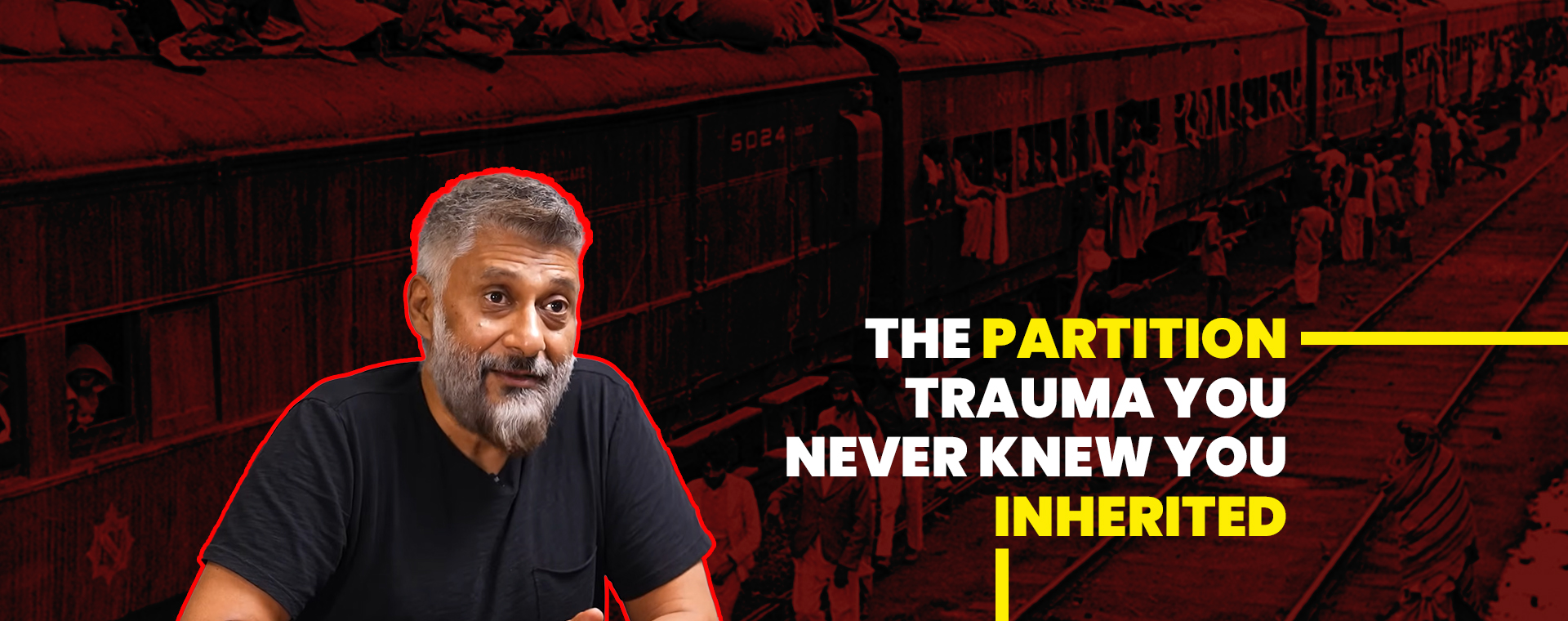

The Psychology of Partition: How Trauma Echoes Across Generations
It’s time we address the scars that generations continue to carry.
Some wounds don’t heal with time. They linger, buried deep in memory, passed down in whispers at gatherings, in the way families hesitate when asked about “what happened back then.”
Partition wasn’t just a historical event. It was a collective wound, a momentous shift that uprooted crores, shattered identities, and redrew not just borders but also the emotional outlook of those who lived through it. And like all unresolved trauma, its echoes continue to shape the present.
Partition is not just history; it’s a shared inheritance. It’s in the stories we tell and the ones we avoid. It’s in the names we forget, the places we never visit, and the deep-seated tensions that still define relationships between communities and nations. But how exactly does a tragedy that happened over 75 years ago continue to affect people who weren’t even born then? And how does trauma, both personal and collective, carry across generations?
The First Generation
Imagine losing everything overnight, your home, friends, land, as well as a sense of security. The first generation of partition survivors lived through this nightmare. They walked across borders with nothing but the clothes on their backs, saw loved ones killed right in front of them, and were forced to start over in lands they didn’t recognise as their own.
But survival doesn’t equal healing. Most of this generation never received therapy, never processed their trauma. Instead, they buried it, focused on survival, and often refused to talk about it. The silence was not forgetfulness; it was a form of self-protection. Because how do you explain to your children a kind of horror you barely understand yourself?
Yet, the trauma manifested in other ways; overprotectiveness, extreme caution, and an unshakable paranoia about security. Families that had lost everything once became obsessed with rebuilding wealth, hoarding assets, and ensuring that no matter what happened, their children would never have to experience the same instability.
For some, this trauma turned inward; silent suffering, flashbacks, and an inability to feel completely at home anywhere. For others, it projected outward; deep mistrust of the “other,” lingering resentment, and the idea that history could repeat itself if they didn’t stay vigilant.
The Second Generation
Children of partition survivors grew up in homes where trauma was a perennial presence. They heard fragments of stories, half-finished sentences, and saw how their parents flinched at specific memories. Even if they weren’t explicitly told what had happened, they felt it.
This generation inherited their parents’ fear and survival instincts, often without context. Why were they always told to be careful? Why did their parents insist on financial security above all else? Why did they grow up with a vague anxiety about borders, belonging, and identity?
For many, partition was personal, even if they had never lived it. Some grew up hearing about the houses their families left behind in Lahore or Amritsar, about severed friendships, and train journeys on which people disappeared. This created a strange duality: feeling deeply connected to a past that no longer existed and longing for a home they had never actually seen.
At the same time, political narratives shaped their understanding of partition differently. Governments on both sides of the border used history to reinforce national identities, often simplifying the complex realities of 1947 into straightforward, binary explanations; heroes and villains, us versus them. And so, trauma was no longer just personal; it became geopolitical.
The Third Generation
By the time the grandchildren of partition survivors came of age, they were far secluded from the actual event. They didn’t grow up seeing refugee camps or hearing first-hand stories of displacement. And yet, partition continued to influence their identity in ways they often didn’t even realise.
For some, it was in the way history was taught, partition was simply a fact, a line in a textbook, rather than a lived experience. For others, it was in the cultural and religious divides that persisted in families, the biases that were subtly passed down, and the way old wounds still dictated modern relationships between communities.
But this generation also has the most opportunity to break the cycle. With access to information beyond nationalistic narratives, platforms to connect across borders, and a growing awareness of inherited trauma, they have the power to reshape how partition is remembered.
Looking Forward
Partition didn’t just divide land, it divided families, hearts, and histories. And trauma, when left unaddressed, doesn’t just disappear. It morphs. It is passed down in the form of fear, in silence, in stories that shape identities without people even realising it.
Acknowledging trauma is the first step in healing it. Films, literature, and oral histories have started filling in the gaps left by silence, helping newer generations understand what happened and how it shaped their heritage. In that understanding, there is an opportunity not just to remember but to reconcile.
Because history is never really in the past, it lives in us, shaping who we are, whether we acknowledge it or not. The story of partition; of loss, survival, and resilience, is still being written. The question is: How do we want the next chapter to look?






